Joslyn Art Museum Opens Reinstalled European Galleries with New Acquisitions
- OMAHA, Nebraska
- /
- May 20, 2017
A new presentation of Joslyn Art Museum’s renowned collection of European art awaits visitors. Debuting over the weekend, the reinstallation of the Memorial Building's five south galleries offers a renewed perspective on the museum’s significant holdings of European art for both long-time patrons and new audiences.
The galleries begin with Medieval, Renaissance, and Baroque artists, continue with eighteenth- and nineteenth-century works by French and British painters, and conclude with Impressionism and the beginnings of modernism. The reinstallation addresses several objectives, including renovating the physical gallery spaces for the first time since 2000; treating paintings and sculpture in need of conservation; and providing up-to-date interpretive content, including new wall labels and in-gallery technology. Most significantly, the Museum has recently acquired four new works for the European collection, all of which are now on view.
Dana E. Cowen, Ph.D., associate curator of European art, said the acquisitions are a highlight of the project. “The four acquisitions, all paintings, are major works that strengthen the permanent collection by enhancing key areas of our European holdings. Additionally, they provide added context for other works in the collection and help us achieve our goal of displaying the artwork in a more cogent, art historical narrative. These acquisitions, joined with familiar favorites, assure new, thoughtful experiences for visitors to the galleries.”
This reinstallation has been supported by the Gilbert M. and Martha H. Hitchcock Foundation, Iowa West Foundation, The Sunderland Foundation, and Humanities Nebraska and the Nebraska Cultural Endowment.
New Acquisitions
To augment the European collection and fill important historical gaps, the Museum has acquired four significant paintings:
Hans Pleydenwurff (ca. 1425–1472) or his workshop, The Crucifixion, ca. 1460-70, oil on panel,
51-3/4 x 31 inches, Museum purchase with funds from the Berchel H. and Alice Dale Harper Estate, 2017.1
The acquisition of a large gold-ground devotional panel of the Crucifixion by German artist Hans Pleydenwurff, one of the most significant artists active in Germany around the turn of the fifteenth century, provides a transformative addition to gallery one, a space dedicated to religious objects of the thirteenth–fifteenth centuries from Italy, Spain, and the Netherlands.
The abstract composition depicts Christ on the cross accompanied by the Virgin Mary, Saint John the Evangelist, and the female donor of the painting. The painting’s donor is small in scale compared to the other figures, and she kneels at the foot of the cross. The panel was likely intended as an epitaph commissioned by the donor prior to her death, which was to be hung near her future burial site on a column in her parish church or in a religious house. The devotional subject and likely high expense of the panel would have demonstrated both her social status and religious piety to the community.
Angelica Kauffmann (Swiss, 1741-1807), A Portrait of Mary Tisdal Reading, 1771–72, oil on canvas, 24-3/4 x 29-3/4 inches, Museum purchase with funds from the Drew Acquisitions Fund, 2016.9
Swiss-born, Italian-trained artist Angelica Kauffmann is considered among the most successful female artists prior to the late nineteenth century. In 1771, Kauffman spent six months in Ireland, during which time she painted Joslyn’s newly acquired A Portrait of Mary Tisdal Reading. The painting depicts Mary Tisdal, the daughter of the Irish Attorney General Philip Tisdal, reclining outdoors with a book accompanied by three sheep. Kauffmann likely portrays the sitter as a character from the book she is reading: the shepherdess Erminia from Torquato Tasso’s sixteenth century epic poem “Gerusalemme Liberata.”
The painting complements the Museum’s current eighteenth-century portraiture, but also provides a link to an earlier painting in the collection that depicts a scene from the same poem — Italian artist Bernardo Strozzi’s Erminia and the Shepherds of around 1620. Finally, this acquisition is an inaugural step in expanding the presence of female artists in the European galleries.
Jan van Goyen (Dutch, 1596–1656), Landscape with a Mill, 1634, oil on panel, 11-3/4 x 14 inches, Museum purchase with funds from the Berchel H. and Alice Dale Harper Estate, 2017.3
Jan van Goyen is considered a pioneer of the naturalistic landscape painting style that emerged in Holland during the seventeenth century. A contemporary of Rembrandt, Van Goyen was largely active in The Hague, but traveled frequently throughout the Netherlands, recording topographic views of the countryside that he later made into finished paintings. This painting exemplifies his ‘tonal’ landscapes of the 1630s that employ soft outlines and gentle, harmoniously interlinked colors to evoke atmosphere, depth, and the interrelationship between human life and nature. The mill and church symbolize the flourishing agriculture of the northern Netherlands and the steadfast religious faith of the people in the United Provinces during their struggle for independence against the Spanish.
The picture brings attention to the Museum’s seventeenth-century Dutch holdings, illustrating the secularization of subject matter in the Dutch Republic, and provides added context for Joslyn’s Portrait of Dirck van Os by Rembrandt.
Gerard Donck (born before 1610–died after 1640), Portrait of Nicolaes Willemsz. Lossy and his wife Marritgen Pieters, 1633, oil on panel, 18-3/4 x 24-3/4 inches, Museum purchase with funds from the Berchel H. and Alice Dale Harper Estate and bequest of Rose Marie Baumgarten, 2017.2
Active in Amsterdam alongside Rembrandt, Gerard Donck painted market and genre scenes, street vendors, and portraits set in interiors and landscapes. His small-scale portrait of Nicolaes Willemsz. Lossy (ca. 1604-1664), city organist of the Nieuwe Kerk in Amsterdam, and his wife, Marritgen Pieters, combines earlier conventions of court portraiture with everyday settings and objects. This new approach to the subject was popular among members of the rising Dutch merchant class because it offered both prestige and an opportunity to display their interests and individuality.
This stunning double portrait communicates multiple aspects of seventeenth–century Dutch society, including how the emerging merchant class fashioned identity through portraiture. Through specific elements such as furniture, costumes, musical instruments, and books, the painting also reveals the importance of trade and manufacturing, the current fashions of the 1630s, and the significance of music as both a profession and as a symbol for family unity. Moreover, the painting illustrates a popular portrait style during the 1630s when Rembrandt arrived in Amsterdam and speaks to how Rembrandt altered the course of the genre, as seen in our recently reattributed Portrait of Dirck van Os, painted around 1658.

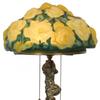
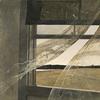

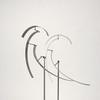

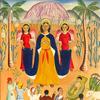





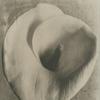



Ser100x100_c.jpg)